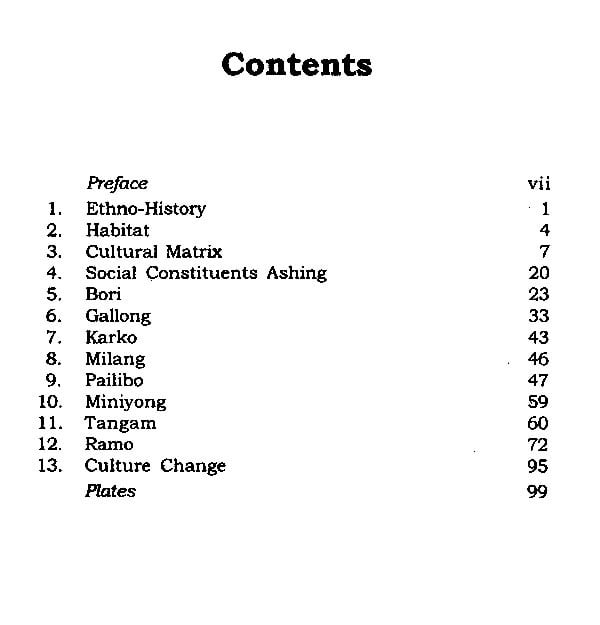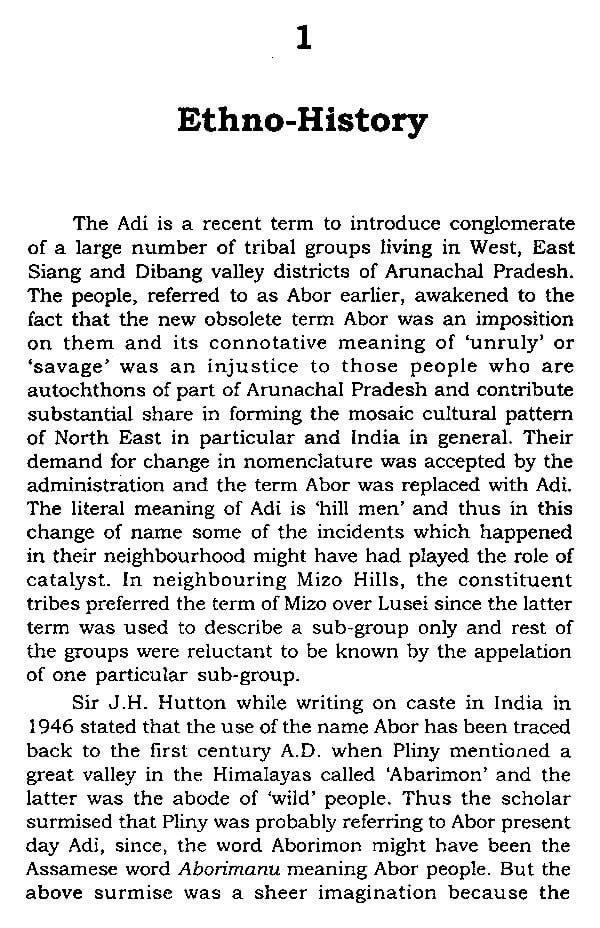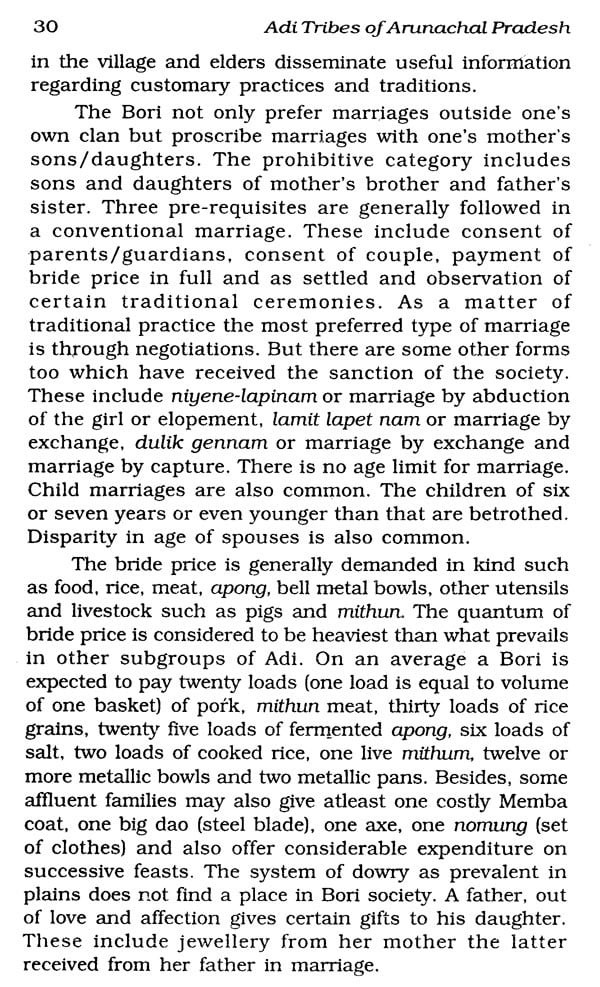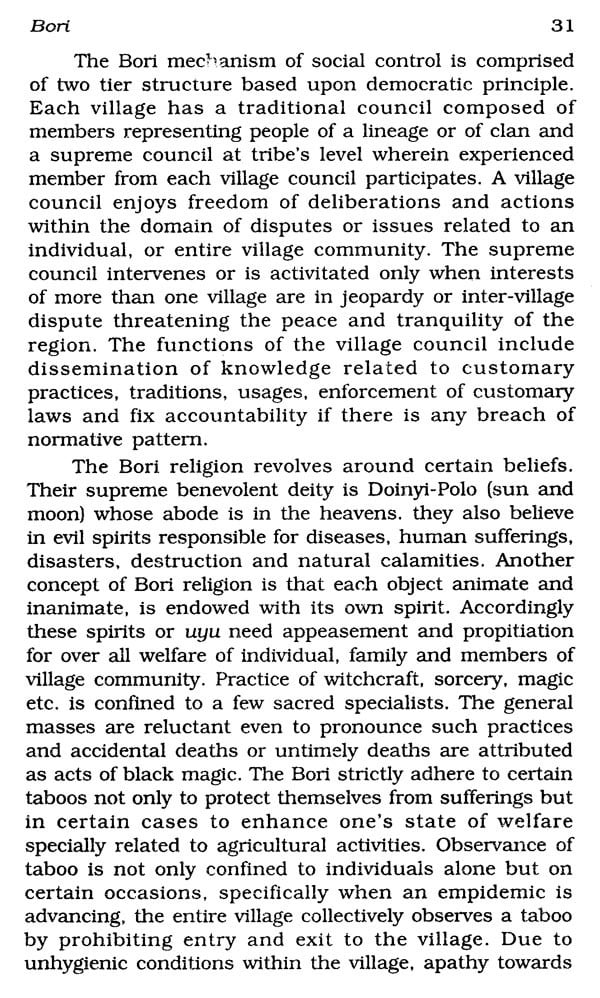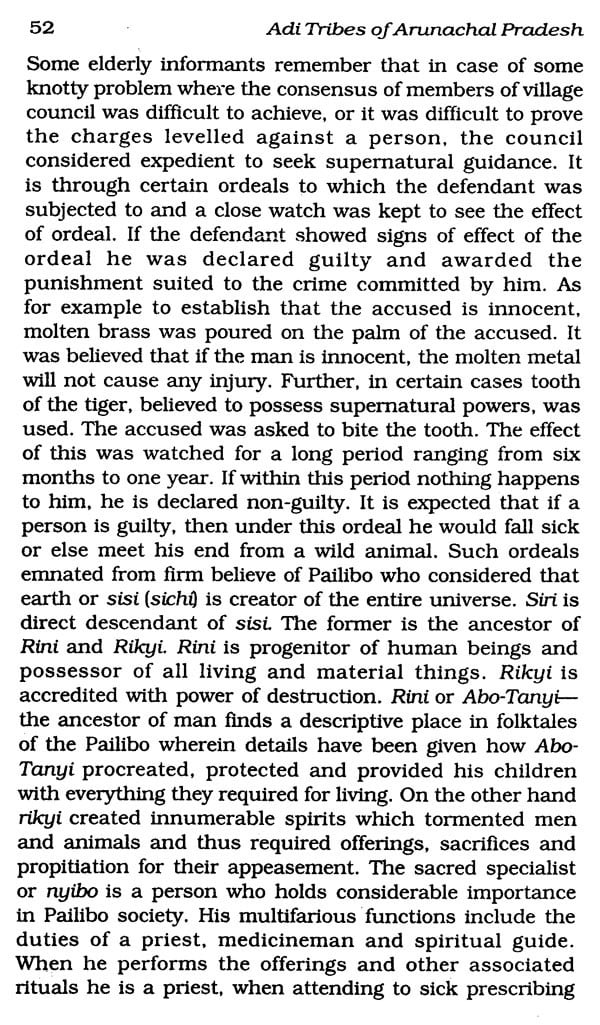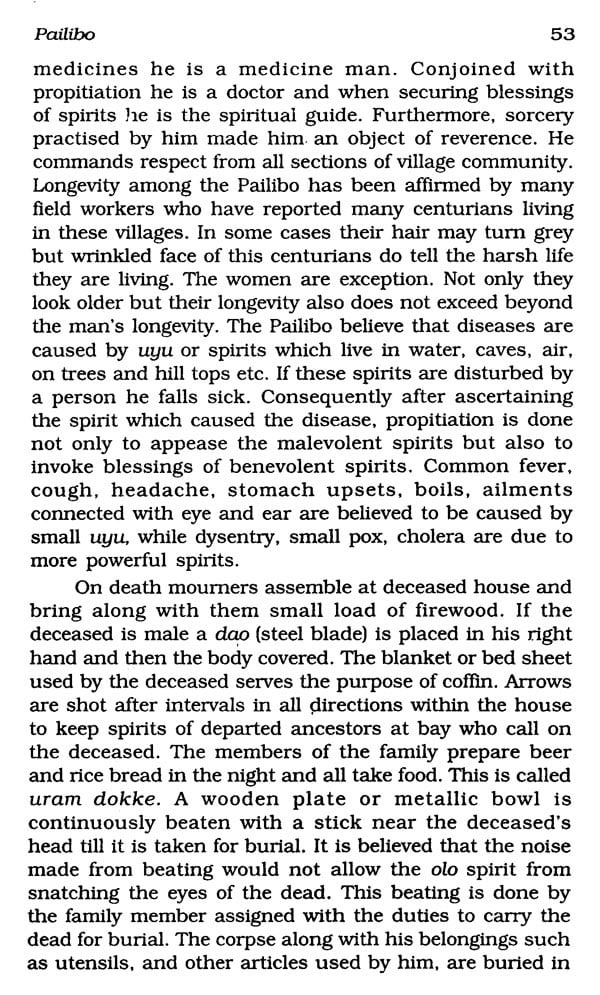
Adi Tribes of Arunachal Pradesh
Book Specification
| Item Code: | AZE541 |
| Author: | S.H.M. Rizvi and Shibani Roy |
| Publisher: | B.R. PUBLISHING CORPORATION |
| Language: | ENGLISH |
| Edition: | 2006 |
| ISBN: | 9788176465243 |
| Pages: | 104 (Throughout B/w Illustrations) |
| Cover: | HARDCOVER |
| Other Details | 9.00x6.00 |
| Weight | 270 gm |
Book Description
Their traditional dance called Ponung' is famous in the whole Arunachal Pradesh. Adi villages are situated generally on the spurs of hills. Polyandry is unknown but polygamy is practised.
It is only in 16th century, the history of Arunachal Pradesh gained coherence from the legends and traditions under the rules of Ahom Kings of Assam. Originally known as North East Frontier Agency (NEFA) it came under the control of the British when they subjugated Assam from the Ahom Kings. The British declared the place as off-limits in 1873 till the eve of world war II. Following independence of India, the Government prepared the tribes to cope up with the modern world and introduced village democracy in preparation of a statewide legislation. In 1971 NEFA was re named to Arunachal Pradesh and in 1972 it became a union territory. On 20" February 1987, it was declared as the 24th State of the Indian Union.
Dr. Shibani Roy, Ph. D. (Delhi University) is actively engaged in field base empirical research among the Muslims of Northern and Western India besides doing field work-oriented research on tribes of Western and North-eastern India.
Tourists in thousands through all the six seasons flock here not for the airports, hotels, recreational facilities, gambling havens, geographic locations, palaces, temples and the people. Each of the above mentioned aspects of tourism in India is much below the mark of world standard. Other countries have better infrastructural and logistic support for comfort of the tourists, Popularity of India in world tourism is because of its vibrant culture and still alive cultural heritage which are manifested in the mundane affairs of the people in their day to day living style: whether they are Hindu, non-Hindu or tribal. All these collectively is an aspect.
**Contents and Sample Pages**

